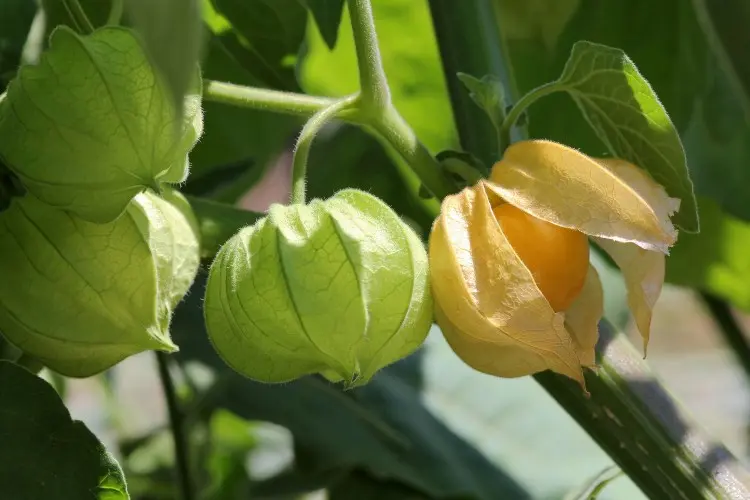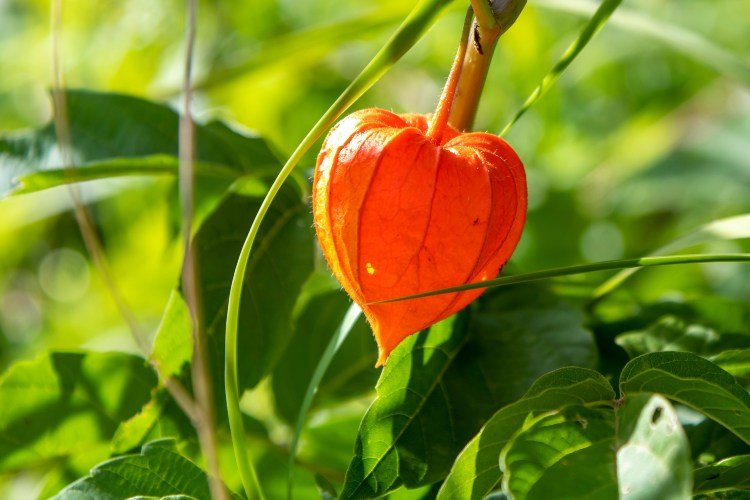Their orange-colored fruits in thin paper lanterns can be found in organic shops from the end of August: the Cape gooseberries (also known as Physalis peruviana). They are delicious and can be processed into jams and marmalades. If you want to enjoy them, you don’t have to spend a lot, as you can also plant the Cape gooseberry in the garden or on the balcony. We shall explain all you need to know about harvesting physalis and when the Cape gooseberries are ripe.
Harvesting physalis: when is the right time?
With proper care and sufficient sunlight in summer, the physalis fruits are ready to be harvested from the end of August to the beginning of September. However, it is very important that you only harvest completely ripe fruit. Unripe fruits are inedible, contain toxins and are dangerous to humans and animals.
When are the Cape gooseberries ripe?
When the perennial forms its fruit, the pods are light green. Over time they turn yellow. The changed color is an indication that the fruit is currently ripening. However, they are not yet ready to be harvested, even if they fall to the ground in July and August. The Physalis fruits are only ripe when their lantern covers have completely dried up and faded or turned brown (both variants are possible). The sleeves should look like parchment paper.
You can then shake the perennial slightly and collect the fallen fruit or pick off the fruit with the pods. Carefully sort out the yellow and orange fruits – they are edible. All Cape gooseberries that have a green nuance should not be eaten.
Can you harvest the fruits green and let physalis ripen?
The physalis cannot ripen later. If the fruits are still green before the first frost, then you can transplant the whole plant into a container and move it to a warm and sunny winter quarters. The Cape gooseberries need a lot of light to ripen.
Otherwise you can keep the ripe fruit with the lantern sleeves in a dry and cool place. Just before eating, remove the skins and rinse the fruit thoroughly to remove the sticky layer.
Harvesting the Cape gooseberries in frost: is that possible?
In regions with a mild climate, Cape gooseberries are ready for harvesting by mid-October at the latest. In tropical countries, the fruits of Physalis peruviana can even bloom and bear fruit several times a year. In these countries, the ripening period extends to the end of October. In addition, the Cape gooseberries do not tolerate frost at all. Often all fruits fall off prematurely after a cold night outdoors.
Harvesting physalis in the garden
Garden plants in particular are often exposed to frost and thrive outside in fall. However, a trick can help the Physalis to be ready for harvest earlier. If you want to save this year’s fruits, then you can cover the plant with fleece, thereby protecting it from frost.
The Physalis peruviana overwinter
So that the fruits ripen faster next year, you can overwinter the plant. Proceed as follows:
- First dig up the plant including the roots and plant in a bucket.
- Then cut back the shoots close to the ground and overwinter the plant in a bright and cool place. An unheated conservatory or a bright summer house with large windows is ideal.
- In winter, water the perennial sparingly and only as needed. Never let the soil dry out, it should always be fresh.
Harvesting physalis on the balcony
How quickly physalis fruits ripen on the balcony depends primarily on its orientation. On the south and west facing balconies, the plants have enough sunlight to be ready for harvest faster. On east or north facing balcony, the fruit will certainly need more time to ripen.
You can help: Keep the plants as warm as possible, sheltered from the wind and rain. If necessary, you can cover them with fleece in the evening as protection against frost. Wrap the pots with fleece as early as mid-October to keep the roots warm.
From the end of October, before the first night frost, you have to bring the physalis indoors. To do this, cut back the plant heavily and overwinter at temperatures between 5° and 8° Celsius in a light and unheated room. During the dormant period, water the perennial sparingly and stop fertilizing. In spring, just before the start of the gardening season, you can slowly increase the watering.
Why do the physalis fruits fall off?
Possible reasons why the perennial suddenly loses all fruit include:
- Insufficient hours of direct sunlight per day. Physalis really needs full sun to bear fruit and then ripen.
- Not enough water. The perennial needs regular watering. The soil dries out much faster, especially in a pot. Therefore – check every two days and always keep the soil moderately fresh.
- Too much fertilizer. Physalis, even as a container plant, requires no fertilizer during the flowering period and afterwards. Too much of a good thing can lead to overfeeding and then the fruit will fall off.
- The plant was brought outside too early in the spring or overwintered too late. The less time physalis spends in low temperatures, the sooner it will bloom and bear fruit.






